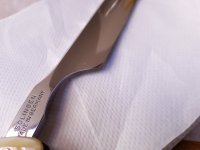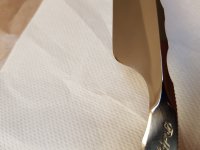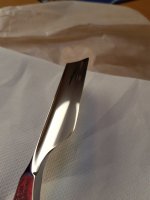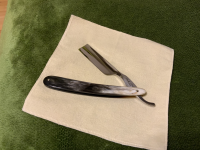Dear all,
I have acquired a Ralf Aust 6/8 and I would like to know if this black mark I found on this brand new razor is normal or not. I have attached photos. It looks very much like a burnt mark. I am not sure what exactly it is.
It is not so conspicuous but it bothers me that the brand new razor came with this black stain on the heel. I have already wrote to Herr Aust about it but I want to ask members here if anyone had the same experience. I would very much appreciate it if anyone can share their knowledge on how to safely remove this mark.
Kind regards,
Chris
I have acquired a Ralf Aust 6/8 and I would like to know if this black mark I found on this brand new razor is normal or not. I have attached photos. It looks very much like a burnt mark. I am not sure what exactly it is.
It is not so conspicuous but it bothers me that the brand new razor came with this black stain on the heel. I have already wrote to Herr Aust about it but I want to ask members here if anyone had the same experience. I would very much appreciate it if anyone can share their knowledge on how to safely remove this mark.
Kind regards,
Chris



